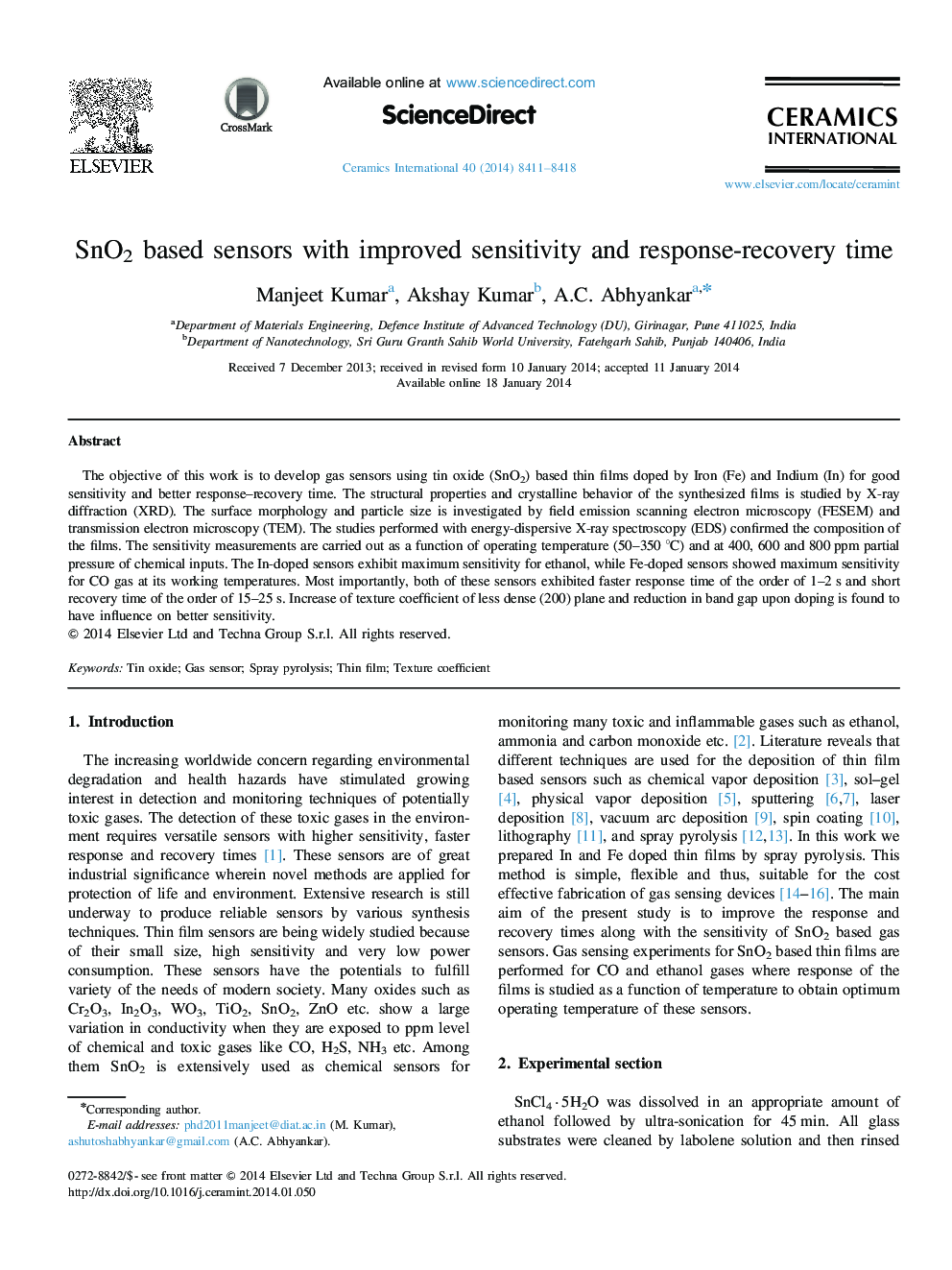| Article ID | Journal | Published Year | Pages | File Type |
|---|---|---|---|---|
| 1461593 | Ceramics International | 2014 | 8 Pages |
The objective of this work is to develop gas sensors using tin oxide (SnO2) based thin films doped by Iron (Fe) and Indium (In) for good sensitivity and better response–recovery time. The structural properties and crystalline behavior of the synthesized films is studied by X-ray diffraction (XRD). The surface morphology and particle size is investigated by field emission scanning electron microscopy (FESEM) and transmission electron microscopy (TEM). The studies performed with energy-dispersive X-ray spectroscopy (EDS) confirmed the composition of the films. The sensitivity measurements are carried out as a function of operating temperature (50–350 °C) and at 400, 600 and 800 ppm partial pressure of chemical inputs. The In-doped sensors exhibit maximum sensitivity for ethanol, while Fe-doped sensors showed maximum sensitivity for CO gas at its working temperatures. Most importantly, both of these sensors exhibited faster response time of the order of 1–2 s and short recovery time of the order of 15–25 s. Increase of texture coefficient of less dense (200) plane and reduction in band gap upon doping is found to have influence on better sensitivity.
